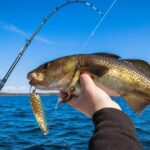One of the best ways to catch catfish is by utilizing trotline fishing techniques – so if you are wanting to catch more catfish, you have to give it a go.
A trotline is a really effective way to passively cover a large fishing area, meaning you can more effectively and efficiently catch fish.
We have written this article to help you understand what a trotline is, as well as how to make one, as well as why they are ideal for catching catfish.
Read on to learn all you need to know to set up your own trotline for catfish.
What Actually is a Trotline?
In fishing, a trotline is defined as a line that has been strung across a body of water (typically, moving freshwater, such as a stream or river, as they have the least width), which has dangling, baited hooks at various intervals. They are a popular catching method in the catfishing community, for their sheer efficacy.
Usually, a trotline is left overnight and then checked the following day – so in terms of active fishing – they really do not require too much effort.
They can be left for a little while because once a fish has bitten a hook, they are held in place by the anchors that are securing the trotline until the angler comes to remove them from the hook.
How to Make Your Own Trotline
When constructing a trotline, they can be as simple or complicated as you feel capable of making or prefer to make.
There aren’t that many secrets for us to reveal – generally, getting a trotline up and running is quite simple, but this article will help you learn all of the essential basics.
Where to Find all of your Supplies
The first thing that you will have to do when constructing a trotline is head to your local hardware store or favorite tackle shops to purchase all of the integral components (they can be bought off of Amazon or other online retailers too if you can’t find them locally).
If you ever find yourself in a bit more of a survival situation, you can even make a trotline out of hooks and paracord.
However, this should only really be done in a bit of an emergency, and if you are planning on regularly using a trotline for catfishing, then it is really important to build a setup that will be able to endure regular use.
Key Trotline Components:
There are some key trotline components that you will need, though overall, the setup is generally pretty straightforward. Getting familiar with all of the necessary components can be really helpful if you are ever in any kind of survival situation.
The key items are:
- Cord or line
- Clips
- Swivels
- Hooks
- Bait
You are also able to purchase premade trotlines that come ready-made in various lengths, and with varying numbers for dropper lines and hooks.
Let’s take a more in-depth at all of these items so that you can make your own trotline:
Trotline string
You can basically make a trotline out of any kind of string, all the way from thick paracord, to far thinner monofilament. Though a lot of which sting you choose is dependent on your personal preference, we typically recommend that you go for something pretty robust, such as 550 paracord.
This is because 550 paracord is very common and easy to get your hands on (you will definitely be able to purchase it at your local hardware store).
It is probably the most common type of paracord to take camping, so can be used if you ever find yourself in a survival situation.
If you have any kind of dislike for paracord, you can use twine as an alternative, which can even work out cheaper, and works perfectly well.
Trotline hooks
3/0 hooks seem to be the best (and most commonly used) hooks for trotlines, especially when it comes to catching a medium variety of fish, such as the catfish.
You even have the chance to experiment with a few different hook sizes, as you have many dropper lines going into the water. We suggest that you will also want to get circle hooks, as they don’t need to be set – because trotlines are passive, the fish basically set the hooks themselves!
Trotline swivels
Swivels will fasten the main trotline to the dropper line. It is recommended that you choose Barrel type swivels – as these will help to keep all of the line free from wrapping or tangling together as the fish thrashes to get off the hook.
Trotline Clips
Clips are used in a trotline instead of swivels if you prefer to use them. They are pretty similar looking to tuna clips if you have ever used them.
In order to operate a trotline clip, you only have to pinch and open the clip, attach one end to your main trotline string across the river, and then have the other end tied to your dropper line with the hook.
Trotline Brads
Brads are used in the typical trotline, and are tiny hinge clips that act as swivels, and clip everything into one spot on your main trotline. Depending on your preference and the complexity of your trotline, you may be able to forgo the use of a brad clip, and instead opt to just tie a knot onto the mainline.
Trotline Winder
For the casual trotline rigger, you can just manually wind in your line. However, if you are more experienced, and have set up a longer trotline, it could be a good idea to get yourself a trotline winder to help you bring in your heavy (hopefully) fish-laden trotline.
Trotline Prop Stick and Roller
If you are setting up a trotline to catch crabs, you might want to invest in a prop stickler and roller to equip your boat with. Typically, they are made from PVC pipe, metal tubing, or even a fancy roller.
They will help to pull the trotline up and out of the water far more easily. Through this, you can collect your catch whilst moving from one end of the line to the other.
Trotline Anchors and Floats
In order for trotlines for catfish to be set properly, you will have to weigh each end of the trotline down into the water, as well as have floats periodically spaced to prevent the line from touching the bottom.
In some cases, when setting up a trotline for catfish, you will have an available fixed anchor, such as a tree, or rock. However, do bear in mind that the weight necessary will vary based on the length of a trotline.
For example, if you are running a trotline in a lake, then it will be necessary for your weights to be between 8 and 15 pounds ideally, to ensure the line stays in place and the fish do not escape.
A Step-By-Step Guide to Building Your Own Homemade Trotline
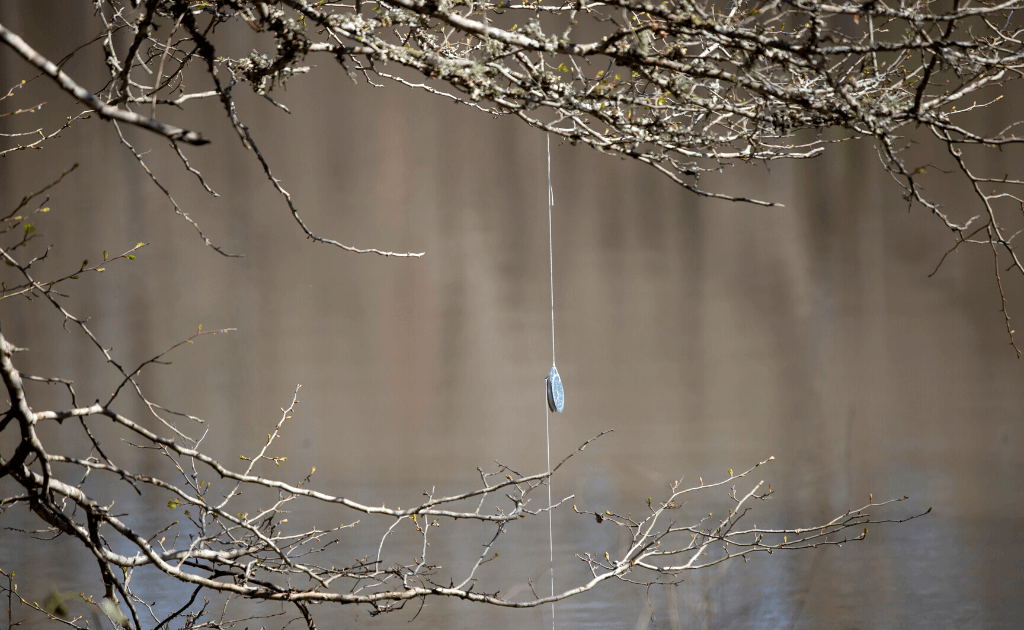
1. The first thing that you will have to do is choose a length of mainline that works well for your body of water. So, if your trotline is going across a river, it shouldn’t be longer than the width of the area of the river you are setting it at unless you choose to set the line at an angle.
The length that you choose depends a lot on personal preference. Some anglers like to use long lines, and others prefer to use shorter lines.
The length of the line will determine the number of drop lines that you will have off of it. If you are new to trotline fishing, then we recommend that you try anything from around 15 to 40 feet long to get started.
2. Add your swivels/your loops to the mainline. Hold them in place with swivels. We like to space all of our dropper lines about two to three feet apart, which avoids them tangling together.
Swivels are nice to use for this job because they help to prevent tangling when hooked fish are fighting to get free. You should be keeping your swivels in place using brad clips or knots at each end of your swivel apparatus.
3. Add your dropper lines using clips. At this point, if you haven’t already made your dropper lines, then it is time to do that. Your dropper lines can be any length, so long as they aren’t too long, and drag along the bottom of the bed whilst you are fishing.
Use a clip to attach your droppers to your mainline. This way, you can keep track of where your droppers are located, and remove them if needed.
If you choose to attach a one-foot dropper line, you can use the loop method, by taking two feet of material and tying them together at the loose ends.
This will make a loop that can be slipped through the clip and secured. Attach a hook at the opposite end, and you should be set to go.
Alternatively, if you don’t want to use the loop method, then you can choose a knot that works well for you and secure the clip to one end and a hook to the other.
Attach bait to your hooks and clip your dropper line to your mainline swivel.
4. Now, you can add your anchors and floats. You should have left enough rope at each end of the mainline to attach the anchors and floats, so that the line stays rooted in place, and does not drag on the bed of the waterway.
Your anchor will rest on the bottom, but there should still be enough slack for the floats to rest on the surface of the water, so that you can see where the line has been dropped, in addition to keeping the dropped line from touching the bottom.
Final Thoughts
In conclusion – I hope that this guide was helpful for those who were looking for information regarding how to build a trotline to catch medium-large fish, such as the freshwater catfish, channel cats, gizzard shad, or flathead catfish.
Hopefully, you will make a great trotline catch using tips that we have outlined in this article.
As with a lot of fishing – there aren’t really that many trade secrets or tips and tricks to setting a successful trotline, and if you are new, a lot of this is (rather annoyingly) down to personal experience, and working out your preferences.
Where you like to fish also impacts how you set trotlines – so just go into setting your first lines with an open mind, and try out a couple of different techniques.
- Do You Need An Indicator For Nymph Fishing? - November 16, 2023
- Fishing Safety Tips For Families - September 25, 2023
- What Is The Best Time To Night Fish At A Lake? - September 18, 2023



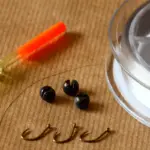
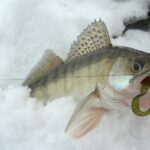
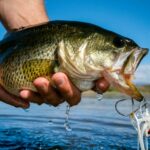
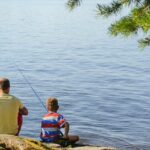
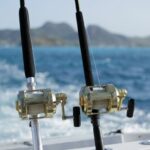
![Kayak Fishing for Beginners [10 Tips for a Successful Trip] fishing kayak moored on a beach](https://irvinelake.net/wp-content/uploads/2022/12/kayak-fishing-for-beginners-150x150.png)
